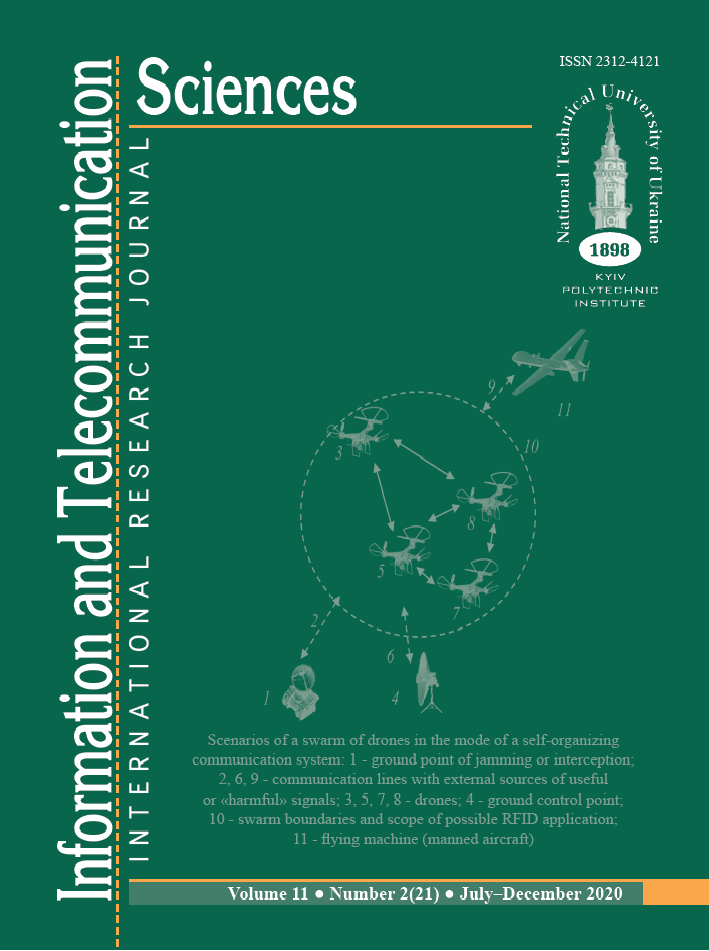“VAGUE BUT EXCITING” – THE NARRATIVE BEHIND THE HISTORY OF TIMOTHY BERNERS-LEE’S INVENTION OF THE WEB
DOI:
https://doi.org/10.20535/2411-2976.22020.92-99Keywords:
the history of the World Wide Web (WWW), Tim Berners-Lee, narration, narrative identity, humanism, interconnectedness.Abstract
Background. The history of science is a multifaceted endeavor. It comprises theory and practice of scientific inquiry, epistemological issues, the formation and evolution of scientific paradigms, language and science, but, above all, people’s trials and tribulations, needs and aspirations. Ours is the age of the World Wide Web – also termed as the WWW or simply the Web - part and parcel of present-day information and communication technologies age. The key person behind this seminal invention and disruptive innovation is the British scientist and engineer Timothy Berners-Lee.
Objective. The aim of this paper is to unveil the history of the World Wide Web through the prism of the narrative identity of Tim Berners-Lee – the WWW initiator and developer.
Methods. We used mixed (both quantitative and qualitative) methods, specifically, discourse analysis and postmodern narrative research methods, as well as quantitative Lawrence Anthony’s AntConc corpus analysis toolkit for the keyword, frequency, collocation and text analysis. The material of our analysis is mostly Tim Berners-Lee’s book “Weaving the Web” plus several other resources.
Results. The case of the WWW, specifically, the story of Tim Berners-Lee is an example of a “little narrative” that fits within the current postmodern narrative paradigm. His narrative identity is elucidated via Michael Bamberg’s “three-level
positioning” narrative analysis technique: authorial positioning on the level of the story, on the level of the interaction, and on the level of self-defining. Berners-Lee is viewed as a humanist, an altruistic and modest person who is enthusiastic about scientific progress for the benefit of humanity.
Conclusions. The story behind the history of the WWW invention proves the importance of studying “little narratives”. Berners-Lee’s story could best be described as the narrative of human interconnectedness via technology to solve problems.
References
Huurdeman, A. The Worldwide History of
Telecommunications, Wiley-IEEE Press; 2003, 660 p.
(ISBN 978-0471205050)
Hills, J. Telecommunications and Empire (History of
Communication) 2007, 312 p. University of Illinois Press
(ISBN 978-0252032585)
Alesso H. P., Smith C. F. Thinking on the Web:
Berners-Lee, Gödel and Turing. Wiley-Interscience, 2008.
p. (ISBN 13 978-0471768661)
Pomerantz, J. Metadata, The MIT Press, 2015, 256 p.
(ISBN 978-0262528511).
Ilchenko, M., Kravchuk, S. Telecommunication
systems, Kyiv. Naukova dumka, 2017, 736 p.
(ISBN 978-966-00-1566-1)
Dodd. A. Essential Guide to Telecommunications,
Pearson, 2019, 365 p. (ISBN 978-0130142955).
Knott-Craig, A., Tysoe, J. History of
Telecommunications, Bookstorm, 2020, 360 p. (ISBN
-1928257738).
Bory, P. The Internet Myth: From the Internet
Imaginary to Network Ideologies. University of
Westminster Press, 2020, 169 p. (ISBN 978-1-912656-76-9). doi: https://doi.org/10.16997/book48
Hyland, K. “Narrative, Identity and Academic
Storytelling”, in ILCEA Revue de l’Institut des langues et
cultures d'Europe, Amérique, Afrique, Asie et Australie, 31
(1), pp.1-16, 2018, retrieved from
http://journals.openedition.org/ilcea/4677
Gordin, M. D. What do we talk about when we talk
about language and science? Centaurus, 62, 822-825,
,retrieved from
https://onlinelibrary.wiley.com/doi/full/10.1111/1600-
12325. doi: https://doi.org/10.1111/1600-0498.12325
Kuhn, T.S. The Relations between History and the
History of Science,” originally published in Daedalus 100
(1971),pp. 271–304, and reprinted in Thomas S. Kuhn,
Essential Tension, 2019, retrieved from
https://pure.mpg.de/rest/items/item_2418713_10/compone
nt/file_3047835/content
Darian, S. Understanding the Language of Science.
University of Texas Press, 2003, 262 p. (ISBN 978-
Berners-Lee, T. Weaving the Web: The Original
Design and Ultimate Destiny of the World Wide Web.
Harper Business, 2000, 246 p. (ISBN 978-0062515872)
Anthony, L. AntConc (Version 3.5.7). Tokyo, Japan:
Waseda University. Retrieved October 15, 2017 from
http://www.laurenceanthony.net/software
Hyland K. Disciplinary Identities: Individuality and
Community in Academic Discourse (Cambridge Applied
Linguistics). Cambridge: Cambridge University Press,
, 252 p. (ISBN 978-0521197595).
Ivanic, R. Writing and Identity: The Discoursal
Construction of Identity in Academic Writing,
Amsterdam: John Benjamins, 1998, 387 p. (ISBN
.
Kramar, N. A. “Towards an Integrative Approach to
Identity Construction in Academic Discourse”, in
Lingvystychni Studii, 3, pp. 113-119, 2017,
http://nbuv.gov.ua/UJRN/lingst_2017_33_21
Kramar, N. “Engagement Markers in The Feynman
Lectures On Physics: Applying Hyland’s interaction
framework to spoken academic discourse”, in AdvancedEducation 12, pp. 127-134, 2019 (Web of Science Core
Collection). doi g/10.20535/2410-8286.144603
McAdams, D. P. “Narrative identity”, in S. J.
Schwartz, K. Luyckx, & V. L. Vignoles (Eds.), Handbook
of identity theory and research, pp. 99–115, Springer
Science+ Business Media, 2011, doi.
https://doi.org/10.1007/978-1-4419-7988-9_5
Currie, M. The Manufacture of Identities, in:
Postmodern Narrative Theory. Transitions. Macmillan
Education UK Palgrave, London, pp. 17-32, 1998, doi:
https://doi.org/10.1007/978-1-349-26620-3_2
Bamberg, M. “Positioning between structure and
performance”, in Journal of Narrative and Life History,
(1-4), pp. 335 - 342, 1997, doi:
https://doi.org/10.1075/jnlh.7.42pos
Bamberg, M. “Who am I? Narration and its
contribution to self and identity”. in Theory & Psychology,
(1), pp. 3-24, 2011, doi:
https://doi.org/10.1177/0959354309355852
Harris, Z. S. Papers on Syntax. Springer, 2011, 480 p.
(ISBN 978-90-277-1267-7). doi: 10.1007/978-94-009-8467-7
Lyotard, J.-F. The Postmodern Condition: A Report on
Knowledge (Theory and History of Literature), University
of Minnesota Press, 1984, 144 p. (ISBN 13:
.
Berners-Lee, T.J, Cailliau, R., and Groff, J-F, "The
World-Wide Web", in Computer Networks and ISDN
Systems, 25, pp. 454-459, 1992.
Hyland, K. “Stance and Engagement: a model of
interaction in academic discourse”, in Discourse Studies, 7
(2), pp. 173-192, 2005. doi: 10.1177/1461445605050365
Yang, W. “Stance and engagement: A corpus-based
analysis of academic spoken discourse across science
domains”, in LSP Journal, 5(1), pp. 62-78, 2014.

